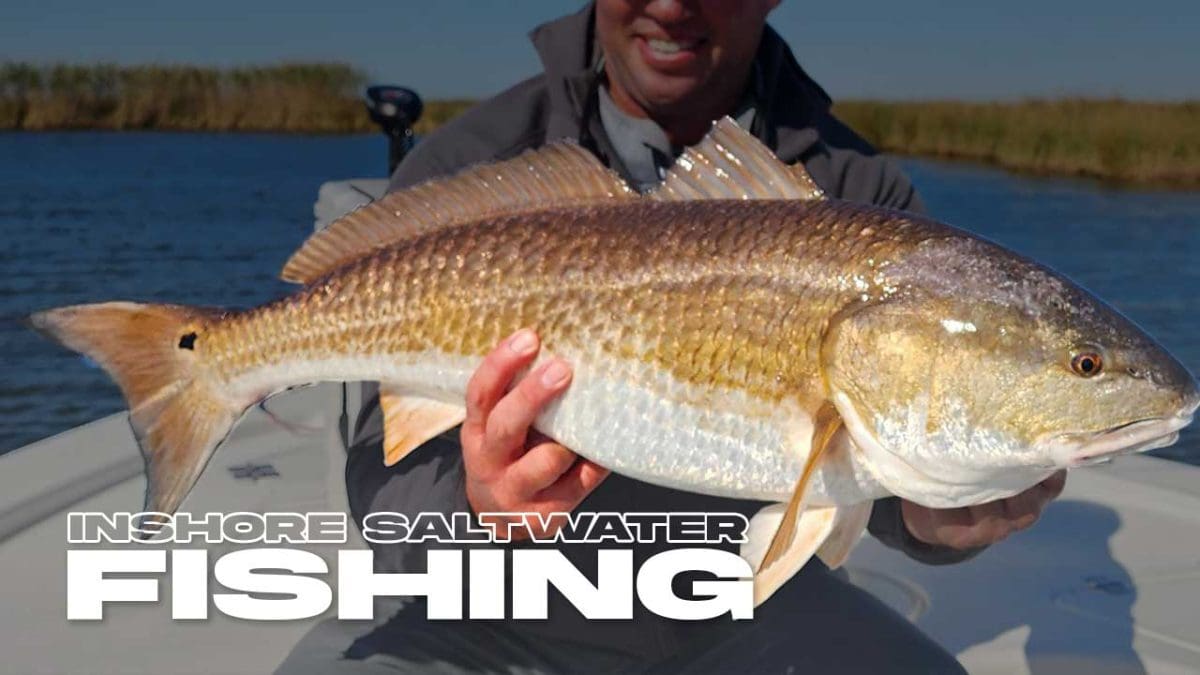A Guide for Inshore Anglers
Before venturing out, spend time learning about the marine ecosystem in your target area. Different fish prefer different habitats, and recognizing these can make your fishing trips more productive.
Better Inshore Fishing Locations
Tidal Flats:
Areas with shallow water during low tide but submerged during high tide. Often inhabited by flounder, redfish, and baitfish.
Oyster Bars:
These structures offer shelter and food for many species, including sheepshead and drum.
Seagrass Beds:
These submerged meadows are prime hunting grounds for sea trout, snook, and redfish.
Mangroves:
Root systems of mangrove trees provide shelter for snook, juvenile fish, and crabs.
Look for Structure
Fish love structure. It provides protection from predators, shade from the sun, and abundant food sources.
Natural Structures:
Includes sandbars, drop-offs, rocks, and reefs.
Man-made Structures:
Piers, jetties, bridges, and docks often attract baitfish, which in turn draw in bigger fish.
Use Technology
Fishing Apps and Websites:
Websites like this one offer a wealth of information and content. Apps that provide community-shared fishing spots, depth charts, and other useful information.
Fish Finders:
Devices that use sonar to detect fish and underwater structures.
GPS:
Helps mark and return to productive fishing spots.
Watch the Birds
Bird activity, especially diving birds, can indicate schools of baitfish. Where there’s bait, predators aren’t far behind.
Follow the Bait
Active schools of baitfish often surface, creating disturbances in the water. Bigger fish shadow these schools from below.
Consider Tides and Moon Phases
Tides:
Many fish are more active during the transition between high and low tides.
Moon Phases:
Full and new moons can create stronger tidal movements, which can influence fish feeding times.
Local Knowledge
Bait Shops:
Local bait shops are gold mines for current information about what’s biting and where.
Fishing Charters:
Hiring a local guide or charter can provide firsthand knowledge and experience in the local waters.
Fishing Forums and Clubs:
Join local online forums or clubs to share information and get insights.
Safety First
When exploring new spots, especially in remote areas:
Inform Someone:
Always let someone know where you’re going and when you expect to return.
Bring Communication Devices:
A charged cell phone or radio can be lifesaving.
Check Weather:
Always check weather forecasts and be wary of sudden changes, especially in coastal areas.
Remember, fishing locations can change with seasons, weather patterns, and human influence. An area that’s teeming with fish one day can be empty the next. The key is to stay adaptable, continuously learn, and enjoy the journey of discovery.
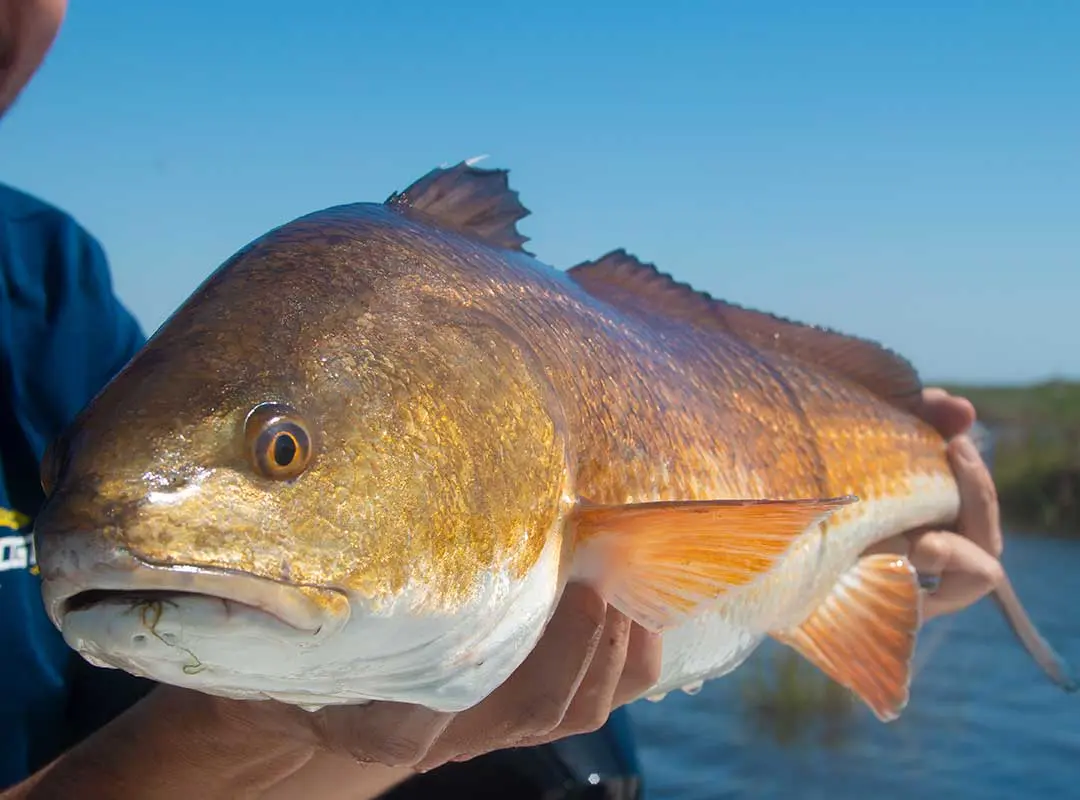
Why Inshore Saltwater Fishing is Popular
Inshore saltwater fishing is popular for several reasons.
First, it provides anglers with an opportunity to catch a wide variety of fish species, including redfish, trout, snook, and flounder.
Second, inshore fishing can be done from shore or on a boat, making it accessible to anglers of all experience levels.
Additionally, inshore fishing typically requires lighter tackle and gear, which can make it more affordable and easier to transport.
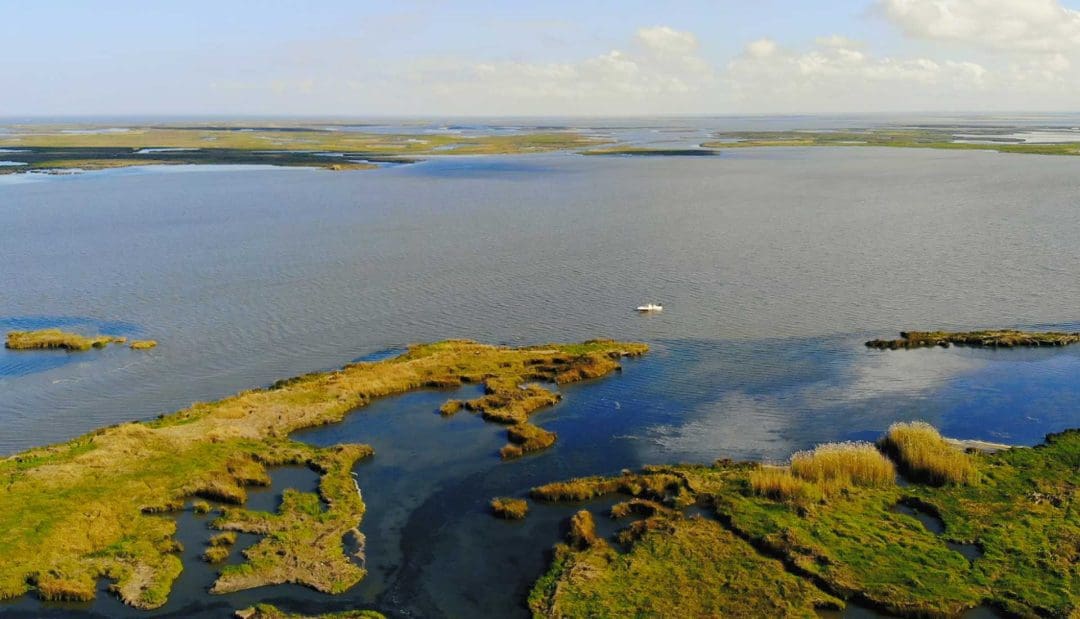
Popular Saltwater Fish Species
The Gulf Coast is home to a wide variety of fish species that are readily available for inshore fishing.
Redfish
Redfish, also known as red drum, are one of the most popular species targeted by inshore anglers.
These hard-fighting fish can be caught year-round and can grow to be quite large.
Trout
Trout are another popular species that can be caught while inshore fishing. Both speckled trout and spotted seatrout can be found in the shallow waters of the Gulf Coast, and they provide a fun challenge for anglers.
These fish are known for their elusive behavior, and catching them requires a bit of finesse and patience.
Flounder
Flounder are also commonly targeted while inshore fishing. These flatfish are known for their unique appearance and delicious taste, making them a favorite among anglers and seafood lovers alike.
They can be caught using a variety of techniques, including jigging and live bait fishing.
Inshore fishing is a great way to experience the beauty and diversity of the Gulf Coast waters while catching some of the most sought-after fish species in the area. Whether you’re a seasoned angler or a beginner, inshore fishing offers a fun and rewarding experience for everyone.
By State Common Inshore Saltwater Fish
| State | Common Inshore Saltwater Fish |
|---|---|
| Florida | Redfish, Snook, Trout, Tarpon |
| Alabama | Speckled Trout, Redfish, Flounder, Sheepshead |
| Mississippi | Speckled Trout, Redfish, Flounder, Sheepshead |
| Louisiana | Speckled Trout, Redfish, Flounder, Sheepshead |
| Texas | Speckled Trout, Redfish, Flounder, Sheepshead |
| South Carolina | Redfish, Speckled Trout, Flounder, Black Drum |
| Maryland | Striped Bass, Bluefish, Red Drum, Croaker |
| Massachusetts | Striped Bass, Bluefish, Tautog, Fluke |
| New Jersey | Striped Bass, Bluefish, Fluke, Weakfish |
| New York | Striped Bass, Bluefish, Fluke, Blackfish |
| Rhode Island | Striped Bass, Bluefish, Tautog, Fluke |
| Maine | Striped Bass, Bluefish, Mackerel, Cod |
| North Carolina | Redfish, Speckled Trout, Flounder, Striped Bass |

Gear Needed for Inshore Saltwater Fishing
Inshore saltwater fishing requires specialized gear that can withstand the corrosive effects of saltwater while also being sensitive enough to detect subtle strikes.
Saltwater Fishing Tips:
A typical gear setup includes a rod and reel, lines and leaders, lures and baits, hooks and weights, and other essential accessories such as pliers, scissors, and a fishing net.
Best Gear for Inshore Fishing:
- Rod and reel rated for saltwater use
- Monofilament or Braided Lines and leaders made of fluorocarbon or monofilament
- Lures and baits such as soft plastic baits, jigs, and topwater lures
- Hooks that are rust-resistant and strong enough for the fish you are targeting
- Weights to get your bait or lure to the desired depth
- Pliers, scissors, gloves and a fishing net for handling fish safely
Fishing Rod and Reel
When choosing an inshore rod and reel setup, look for one that is rated for saltwater use and has a medium power and preferably fast action.
A spinning reel is usually the best choice for inshore fishing due to its versatility and ease of use.
Inshore Fishing Line & Leader
The line should be strong enough to handle the fish you are targeting, and the leader should be made of fluorocarbon or monofilament to prevent the fish from seeing the line.
Inshore Fishing Tackle & Lures
Lures and baits are essential to attract fish, and the type you choose will depend on the species you are targeting.
Soft plastic baits, jigs, and topwater lures are all popular choices for inshore fishing.
Fishing Hooks for Inshore Fishing
Hooks should be strong enough to handle the fish you are targeting and should be rust-resistant.
When it comes to fishing, using the right hook can make all the difference.
Circle hooks are increasingly popular due to their strength and effectiveness in hooking fish in the corner of the mouth, reducing harm to the fish and making catch-and-release easier.
Other strong and effective hook types include J-hooks, treble hooks, and bait hooks, each with their own advantages depending on the type of fishing and fish species being targeted.
Ultimately, the best hook type is the one that suits the individual angler’s needs and preferences.
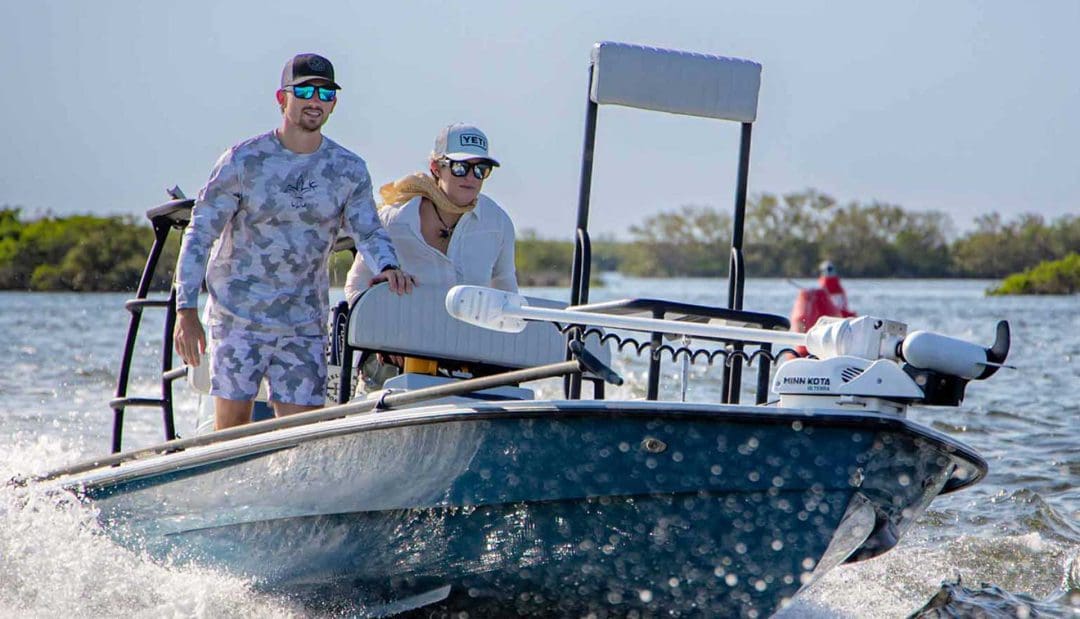
Our Favorite Locations for Inshore Saltwater Fishing
Fishing Mangroves
Mangroves are trees and shrubs that grow in coastal intertidal zones, forming dense forests along the shorelines of many tropical and subtropical regions.
The extensive root systems of mangroves create a complex network of channels and tunnels that serve as nurseries and feeding areas for juvenile fish, as well as shelter and hunting grounds for adult fish seeking protection from predators.
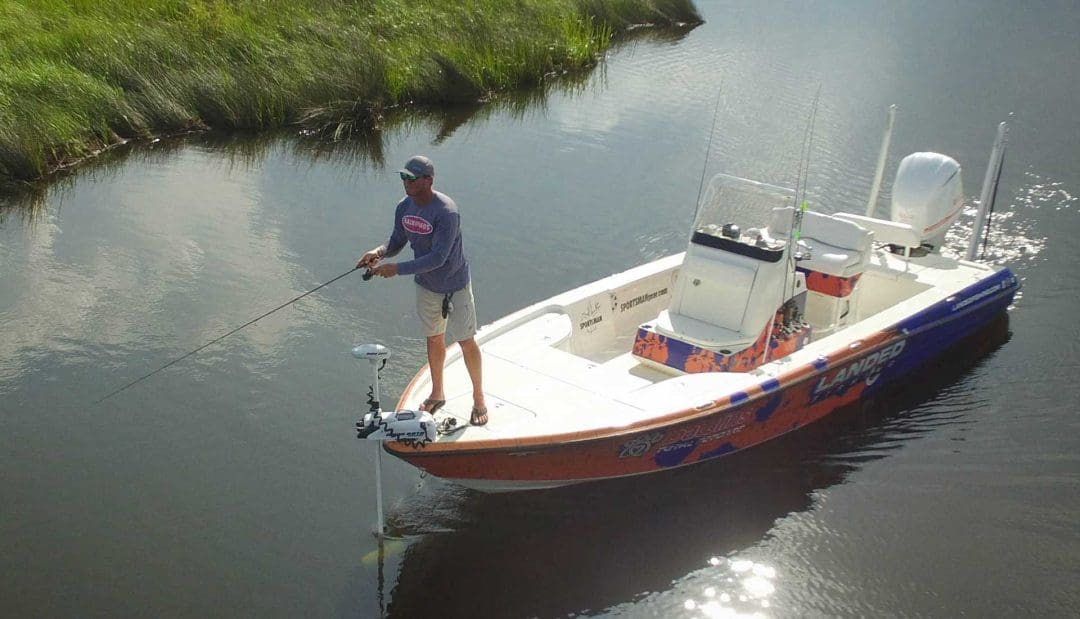
Fishing Grass Flats
Grass flats are shallow areas of a saltwater estuary or bay that are covered with sea grass and other vegetation. These areas are favorite habitats for many species of fish a, making them prime locations for inshore anglers.
The sea grass provides cover and food for small baitfish, which in turn attract larger predatory fish like redfish, trout, and snook. Grass flats can be found in a variety of depths and sizes, and are often located near channels or deeper water where fish move in and out with the tides.
Fishing Oyster Bars
Oyster bars are areas in inshore saltwater habitats where oysters grow in large colonies on top of rocks, shells, or other hard surfaces. These bars often provide important habitat for a variety of fish species, making them a popular spot for inshore saltwater fishing. Oyster bars offer shelter, food, and a place to spawn for species like redfish, trout, and sheepshead.
Fishing Jetties
Jetties are man-made structures that extend out from the shore into the water, designed to protect harbors and shorelines from erosion caused by wave action. In the context of inshore saltwater fishing, jetties can provide excellent opportunities for anglers to catch a wide variety of inshore fish species.
Jetties can be a great spot to target inshore saltwater fish.
Jetties create a barrier that can create eddies and currents, which can attract fish looking for food or shelter. As a result, anglers often target jetties for species such as snook, redfish, and sheepshead. Jetties can also provide a structure for baitfish to hide and can serve as a home for crustaceans and mollusks that many fish feed on.
Bridge Fishing
Bridges are man-made structures that span over bodies of water, and they can be excellent locations for inshore saltwater fishing. Bridges provide structure and cover for saltwater fish, making them natural feeding grounds.
Additionally, bridges attract baitfish, which in turn attract larger gamefish. When fishing around bridges, anglers can use a variety of techniques, such as bottom fishing, jigging, and casting with live bait or lures.
Safety Tips for Inshore Saltwater Fishing
Wearing Protective Gear
It’s important to protect your skin from harmful UV rays by wearing long-sleeved shirts, hats, and polarized sunglasses to reduce glare. Non-slip shoes or boots with good traction are necessary to prevent slipping on wet surfaces, and gloves can protect your hands from cuts and scrapes while handling fish.
Checking Weather Conditions
To have a successful inshore saltwater fishing trip, it’s important to check the weather beforehand. Calm, overcast days are typically best for fishing, while sudden changes in weather can make it more challenging and even hazardous. Paying attention to wind direction, speed, and precipitation can help determine the best time and location for fishing.
Being Aware of Surroundings
Being aware of surroundings is an essential safety practice in inshore saltwater fishing. Before casting, anglers should survey their surroundings to ensure there are no obstructions, such as rocks or docks, that could cause injury or damage to gear.
Handling Fish Safely
Handling fish safely is important for both the fish and the angler in inshore saltwater fishing.
If the fish is going to be released, it’s best to remove the hook with pliers and release the fish as quickly as possible.
If the fish is of legal size and will be kept, it should be placed on ice as soon as possible to prevent spoilage.

